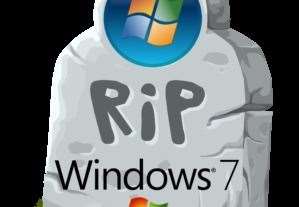The dangers of Windows 7
Microsoft discontinued all support and updates, including security updates for Windows 7, over a year ago now. This is called ‘End of Life’, which essentially means that an application or operating system is no longer supported by the company that makes it.
As we have mentioned before, running End of Life, old or infrequently updated software on your computer is dangerous, and whilst many software developers do continue to release
updates to fix security issues, others do not.
Although Windows 7 was not rendered obsolete after this date, it does mean that using it brings an increased risk of security vulnerabilities – the more people that use Windows 7 after the End-of-Life date, the bigger the incentive is for malicious hackers to target it with viruses.
Remember, the NHS and Windows XP disaster? The National Cyber Security Centre (NCSC), the public-facing arm of GCHQ, (the UK Governments Intelligence and Security services) has warned people not to use Windows 7 for banking or emails.
In February 2021, a water treatment plant in Florida was hacked and the population of the town came close to being poisoned by the increase in toxic chemicals in the water.
Windows 7’s lack of up-to-date security and the bad habit of sharing passwords were cited as two major contributing factors in the security breach.
“Microsoft made a commitment to provide 10 years of product support for Windows 7 when it was released on October 22, 2009,” the company explained.
“When this 10-year period ends, Microsoft will discontinue Windows 7 support so that we can focus our investment on supporting newer technologies and great new experiences.”
Upgrading to Windows 10 is relatively easy, as its interface is similar to that of Windows 10. Do note, however, that Windows 10 is a modern operating system that might struggle to work efficiently on an old Windows 7 machine.
For Windows 10 to work well, we’d recommend installing it on a computer with at least a 2GHz dual-core processor, 4GB of RAM (8GB ideally) and a 120GB hard drive (with at least 30Gb freely available).
We have been installing SSDs on many computers that we have upgraded to Windows 10 as it provides a significant increase in performance as well as being cost-effective.
Buying a new or used machine with Windows 10 already installed is another option. You can quite easily move your files and folders to your new machine using an external hard drive.
No matter which route you take, do make sure that your documents are safely backed up.








Gloss